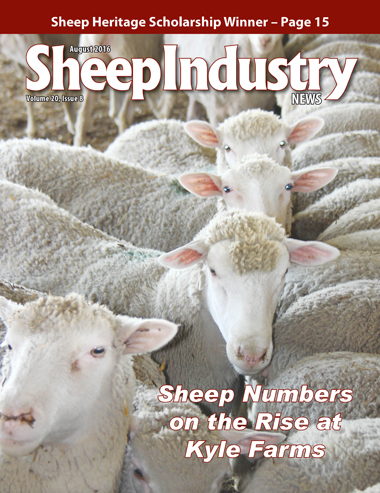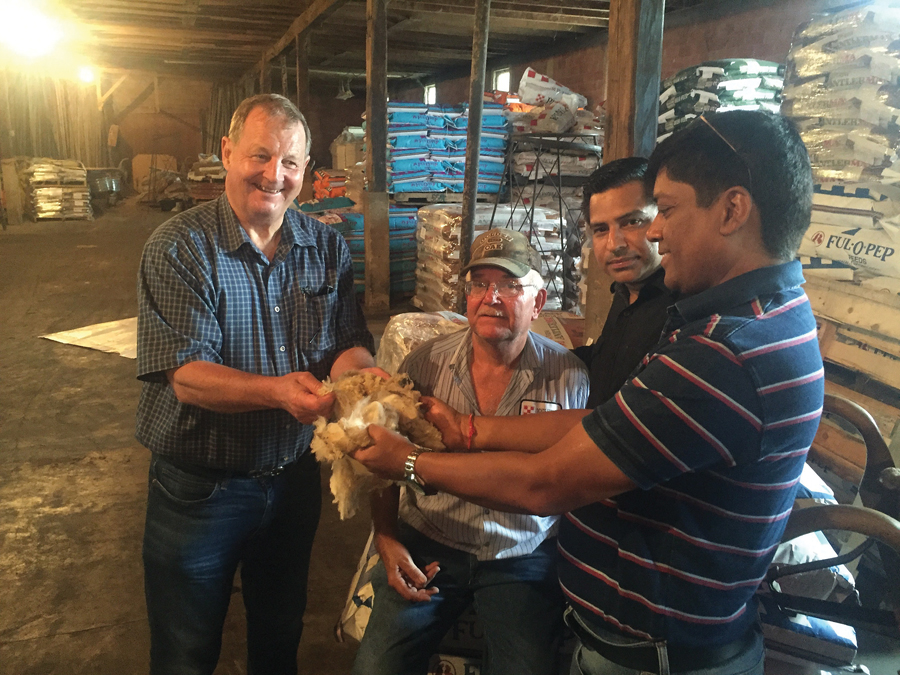
- August 2016
- President’s Notes
- Reverse Trade Missions Spur Wool Sales
- Population Explosion at Kyle Farm
- Wool Council Conducts Yearly Meeting
- No Transparency in Fed’s Sage Grouse Plans
- Posbergh Earns Foundation Scholarship
- Photo Contest Deadline Approaching
- Cuba Open to US Meat
- Q&A: Montana Sen. Steve Daines
- Around the States
- Market Report
- The Last Word
Reverse Trade Missions Spur Wool Sales
In business, there’s no substitute for meeting face-to-face, shaking hands on a deal and developing long-term relationships that are worth far more than any contract the two parties might sign.
That’s the value of reverse trade mission trips such as the ones that recently brought China and India-based wool buyers to the United States. The trips generated the sale of approximately 860,000 pounds of greasy wool. More than 20 containers of American wool are headed to China and India – the top two foreign buyers of domestic wool – at a time when American wool warehouses have wrapped up much of their season and are looking to empty their warehouses of spring-season wool.
While the U.S. Department of Agriculture’s Foreign Agricultural Service financially supports the reverse trade missions, ASI’s wool marketing team identifies opportunities, plans trips and coordinates details in support of the American wool industry. During their trip to the United States, foreign wool buyers visit with companies who can provide the type of wool they are looking to purchase.
In some cases, wool buyers taking part in reverse trade missions work for companies that already have an established relationship with American wool, but are looking for new types of wool for upcoming projects. For instance, clients from China who participated in a recent trip had purchased approximately two million pounds of American wool in the year prior. That’s roughly 45 containers of product that headed overseas.
The visits lead to direct sales, but are also a way to familiarize foreign wool buyers with the aspects of American wool that separate it from wool produced in other countries around the world.
“ASI is able to support wool growers throughout the country with these reverse trade missions,” says ASI Wool Council Chair Ken Wixom of Idaho. “I think the results speak for themselves. Arranging for wool buyers to meet with wool warehouses throughout the United States is a win-win situation for sheep producers and the warehouses which purchase their wool. Foreign companies from countries such as China and India continue to be major buyers of our wool, so we need to do everything we can to embrace these markets.”
Most of the time, buyers travel with one of ASI’s wool consultants. They also often find their way to the ASI office in Denver to meet with ASI Director of Wool Marketing Rita Kourlis Samuelson and ASI Executive Director Peter Orwick.
Recent reverse trade missions have included stops at Anodyne Wool, Groenewold Fur & Wool Company, Keese International, Lempriere, Roswell Wool and the Utah Wool Marketing Association.
The India delegation included Pawan Sharma and Sarat Thakur of Oswal Woolen Mills. While the company has purchased American wool in the past, this was the first opportunity for the two to visit the U.S. and meet suppliers in person. The company representatives purchased wool from two of the three suppliers they met with during the trip, with assurances that they will continue to look for ways to work together in the future.
There’s no doubt reverse trade missions are paying off for the American wool industry.

